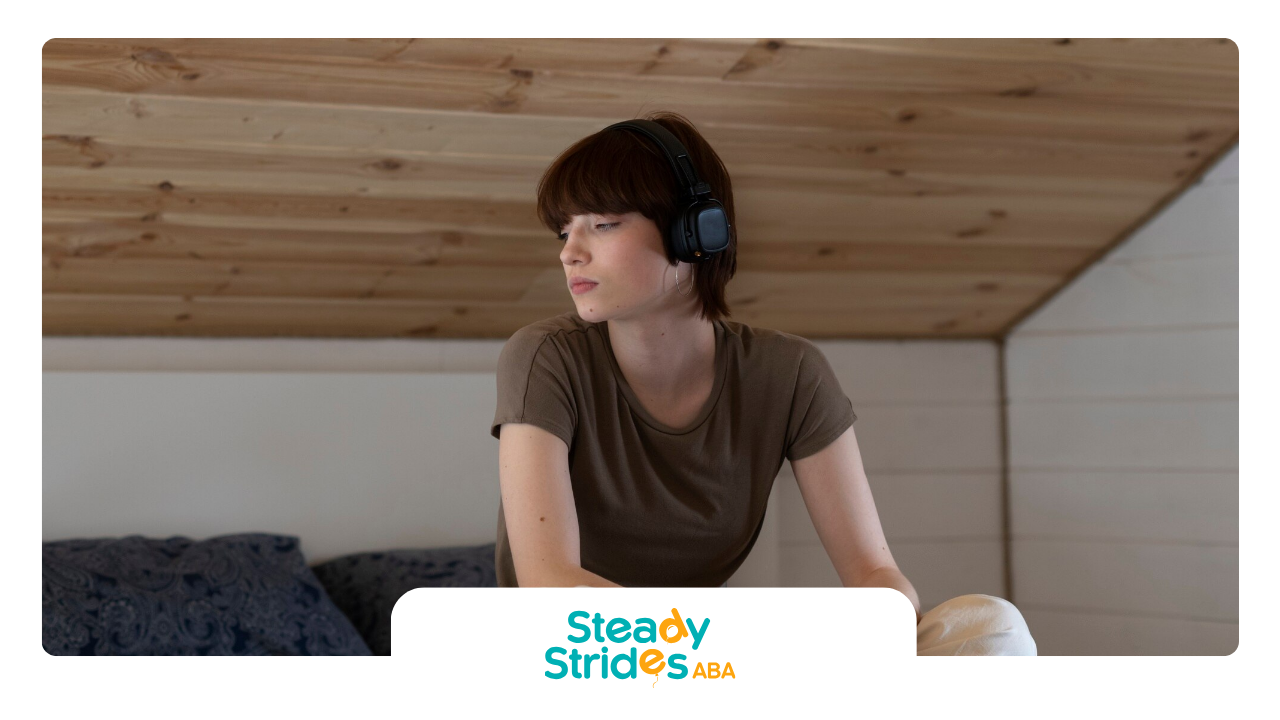Understanding ABA Therapy for Teens
Applied Behavior Analysis (ABA) therapy is a cornerstone in supporting teenagers with autism spectrum disorder (ASD). It leverages principles of behavioral science to foster positive behaviors and reduce challenges, tailoring strategies to individual needs.
Role of ABA Therapy
ABA therapy is designed to help individuals with autism and other developmental disorders learn new skills and improve their social interactions. It focuses on increasing positive behaviors while decreasing negative ones. With personalized treatment plans, ABA therapy uses positive reinforcement, reward systems, and data-driven decision-making to address unique needs.
A key role of ABA therapy is its versatility across different age groups, including teenagers. The approach is not confined to early childhood but extends its benefits to adolescents and even adults. It can assist in teaching independent living skills, social skills, and other functional abilities necessary for daily life.
To learn more about the techniques and methodologies used in ABA therapy, visit our detailed guide on ABA therapy techniques for adolescents.
Impact on Socialization and Communication
ABA therapy also significantly affects socialization and communication, which are critical areas for teenagers with autism. The structured environment of ABA helps adolescents enhance their expressive language and social interactions. It enables them to understand social cues, engage in conversations, and build meaningful relationships.
The impact of ABA therapy on these areas can be substantial, supporting teenagers in navigating the complexities of social interactions. As they improve their communication skills, they gain confidence and independence, which can carry over into other aspects of their lives. Some studies have shown that intensive ABA therapy, provided for more than 20 hours a week during early intervention, can produce dramatic improvements, reducing the need for special services later in life.
For further reading on the specific goals and milestones achievable through ABA therapy for teens, check our article on ABA therapy goals for teens.
Benefits of ABA Therapy for Teenagers
Applied Behavior Analysis (ABA) therapy offers numerous advantages for teenagers with autism. Among these are notable improvements in social skills and communication development.
Improving Social Skills
A significant goal of ABA therapy is to enhance social interactions and relationships among teenagers with autism. This therapy helps them develop vital skills such as initiating conversations, interpreting nonverbal cues, and participating in group activities.
By using techniques such as modeling and role-playing, teenagers learn the social norms that are often taken for granted. ABA therapy aims to provide them with the tools they need to navigate various social scenarios effectively.
| Social Skill | ABA Therapy Impact |
|---|---|
| Initiating Conversations | Teaches how to start and maintain dialogues |
| Interpreting Nonverbal Cues | Helps in understanding body language and facial expressions |
| Group Participation | Trains on how to engage in group activities |
Enhancing Communication Development
Communication skills are another key area where ABA therapy provides significant benefits. This therapeutic approach enables teenagers with autism to express themselves clearly and understand others better. It addresses both verbal and nonverbal communication, as well as the use of alternative communication methods when necessary.
By focusing on functional communication, ABA therapy ensures that teenagers can convey their needs, thoughts, and emotions more effectively. This can include skills like making requests, asking questions, and using appropriate tone and volume in conversations.
| Communication Skill | ABA Therapy Impact |
|---|---|
| Verbal Communication | Enhances clarity and appropriateness of speech |
| Nonverbal Communication | Improves understanding of gestures and expressions |
| Alternative Communication | Introduces tools like sign language or communication boards |
The structured environment provided by a board-certified behavior analyst (BCBA) and registered behavior technicians (RBTs) ensures teenagers receive personalized and targeted interventions.
By equipping teenagers with autism coping strategies and techniques to manage stress, frustration, and anxiety, ABA therapy promotes emotional well-being. This approach helps them replace negative behaviors with more adaptive, positive alternatives.
Explore more about applied behavior analysis for teenagers for in-depth insights into how this therapy can be beneficial for autistic teens. For a range of therapeutic options tailored for teenagers, visit teenage autism therapy options.
Goals of ABA Therapy for Teens
ABA therapy for teenagers with autism focuses on several key goals, including behavior self-regulation and life skills mastery. These objectives are designed to enhance their social interactions, communication abilities, and independence as they transition to adulthood.
Behavior Self-Regulation
One of the primary goals of ABA therapy for teens is to help them develop behavior self-regulation. This involves equipping them with coping strategies and techniques to manage stress, frustration, and anxiety. Through positive reinforcement, ABA therapy promotes emotional well-being and helps teenagers navigate challenging situations more effectively. For a deeper understanding of ABA therapy techniques for adolescents, visit our dedicated page on aba therapy techniques for adolescents.
| Key Foucs Areas | Techniques Used |
|---|---|
| Stress Management | Breathing exercises, relaxation techniques |
| Coping Strategies | Positive reinforcement, behavior modification |
| Emotional Well-being | Social stories, role-playing scenarios |
Life Skills Mastery
Another critical goal of ABA therapy for teenagers is mastering essential life skills. This includes personal hygiene, time management, organization, and self-care. By developing these skills, teenagers with autism can achieve greater independence and become more prepared for adulthood responsibilities.
Key Life Skills Taught in ABA Therapy:
- Personal Hygiene: Teaching routines for daily grooming and hygiene.
- Time Management: Utilizing planners and schedules to manage tasks.
- Organization: Implementing systems for maintaining order in personal spaces.
- Self-Care: Learning to prepare simple meals and managing personal health.
| Skill Life Category | Specific Skills Addressed |
|---|---|
| Personal Hygiene | Daily grooming, dental care |
| Time Management | Use of planners, prioritizing tasks |
| Organization | Decluttering spaces, organizing belongings |
| Self-Care | Meal preparation, managing health appointments |
ABA therapy aims to create a structured environment where these skills can be practiced and reinforced, ensuring that teenagers are well-equipped to handle everyday tasks and challenges.
By focusing on behavior self-regulation and life skills mastery, ABA therapy provides teenagers with the tools they need to thrive. These goals are essential for helping them achieve greater independence and successfully transition to adulthood.
Transition Planning in ABA Therapy
Career Exploration
Transition planning within ABA therapy is essential for teenagers with autism approaching adulthood. This phase focuses on helping them explore various career interests and vocational pathways. By setting personalized goals and assessing individual strengths, ABA therapy can guide teens towards potential career fields that align with their abilities and interests.
Career exploration through ABA therapy often involves:
- Interest Assessments: Identifying areas of interest through assessments and activities.
- Skill Development: Enhancing skills that are relevant to the chosen career path.
- Job Shadowing: Offering opportunities to observe professionals in various fields.
- Internships and Volunteering: Providing real-world experiences to gain practical insights.
| ABA Goal | Activities |
|---|---|
| Interest Assessments | Quizzes, Interviews |
| Skill Development | Workshops, Training Sessions |
| Job Shadowing | Observing Professionals |
| Internships | Practical Learning Opportunities |
These activities help teens build confidence and understand the range of occupations available to them.
Post-Secondary Education Strategies
Post-secondary education is a significant milestone for many teenagers, including those with autism. ABA therapy can play a critical role in preparing teens for this transition by developing tailored strategies that cater to their unique needs.
Key strategies in this area include:
- Individualized Learning Plans: Customizing education plans to accommodate learning styles and challenges.
- Social Skill Building: Enhancing communication and interaction skills for navigating college environments.
- Self-Advocacy Training: Teaching teens how to articulate their needs and seek support.
- Executive Functioning Support: Providing tools to help manage time, organize tasks, and maintain focus.
| ABA Goal | Strategies |
|---|---|
| Individualized Plans | Tailored Education Programs |
| Social Skill Building | Communication Workshops |
| Self-Advocacy Training | Role-Playing, Scenario Planning |
| Executive Functioning | Time Management Tools |
These strategies aim to equip teenagers with the skills and confidence needed to succeed in post-secondary education settings.
By focusing on career exploration and post-secondary education strategies within ABA therapy, teenagers with autism are better prepared for the future, leading to more fulfilling and independent lives.
Effectiveness of ABA Therapy for Teenagers
Applied Behavior Analysis (ABA) therapy offers a range of benefits for teenagers with autism. This section delves into the positive outcomes achievable through consistent and targeted ABA interventions.
Positive Outcomes in Social and Communicative Skills
High-quality ABA interventions have shown to significantly improve behavior, communication, and social skills in teenagers with autism. These improvements enable them to create meaningful relationships, connect with peers, and enhance their overall quality of life.
Research indicates that ABA therapy can facilitate substantial progress in adaptive behaviors, social interactions, and communication abilities. Consistent therapy sessions focusing on these areas can help teenagers develop essential skills that are critical for social integration and effective communication.
| Skill Area | Improvement Level |
|---|---|
| Social Skills | Significant |
| Communication Skills | Significant |
| Adaptive Behaviors | Moderate |
| Separation Anxiety | Moderate |
Improvements in Daily Living Skills
In addition to social and communication skills, ABA therapy is highly effective in enhancing daily living skills. Intensive and long-term therapy using ABA principles has demonstrated improvements in intellectual functioning, language development, and daily life activities.
Daily living skills such as personal hygiene, time management, and household chores can be challenging for teenagers with autism. ABA therapy helps to break down these tasks into manageable steps, teaching teenagers how to perform them independently.
| Skill Area | Improvement Level |
|---|---|
| Personal Hygiene | High |
| Time Management | Moderate |
| Household Chores | High |
By employing individualized treatment plans and maintaining a consistent schedule, ABA therapy helps teenagers with autism make meaningful strides in their daily lives.
Considerations in ABA Therapy Sessions
Applied Behavior Analysis (ABA) therapy is highly individualized, especially for teenagers with autism. Ensuring the effectiveness of the therapy involves tailoring treatment plans and considering the optimal frequency and duration of sessions.
Individualized Treatment Plans
A key component of effective ABA therapy is the development of individualized treatment plans. These plans are designed by a qualified and trained Behavior Analyst (BCBA), who customizes ABA programs to match each teenager’s skills, needs, interests, preferences, and family situation.
Treatment goals are crafted based on the teen's age and ability level, often including specific milestones in areas such as socialization, communication, and self-regulation. The involvement of BCBAs ensures that the treatment is both evidence-based and highly personalized. Additionally, Registered Behavior Technicians (RBTs) work directly with the teen, implementing the strategies outlined in the treatment plan under BCBA supervision.
Key Components of an Individualized Plan
- Assessment of skills and behavior
- Custom treatment goals
- Monitoring and adjusting goals based on progress
- Family involvement and training
Frequency and Duration of Sessions
The success of ABA therapy also hinges on the appropriate frequency and duration of sessions. These factors are tailored to meet the individual needs of the teenager and the severity of their challenges. ABA therapy can be provided in various settings such as home, school, or clinic, each offering different advantages and disadvantages.
| Setting | Advantages | Disadvantages |
|---|---|---|
| Home | Comfortable environment, family involvement | Potential distractions, limited peer interaction |
| School | Natural environment for socialization with peers | Insurance coverage issues, school schedules |
| Clinic | Structured environment, specialized resources | Less naturalistic, travel requirements |
The decision regarding the frequency and duration of sessions should be guided by the BCBA. More intensive programs typically involve multiple sessions per week, each lasting several hours. Less intensive programs may consist of fewer sessions.
General Recommendations
- Intensive: 20-40 hours per week
- Moderate: 10-20 hours per week
- Low-intensity: Less than 10 hours per week
Assessing individual needs and continuously monitoring progress ensures that ABA therapy remains effective for teens, helping them achieve meaningful improvements in behavior and life skills.
Conclusion
In conclusion, ABA therapy serves as a transformative support system for teenagers with autism, guiding them toward improved communication, socialization, and independence. By focusing on behavior self-regulation, life skills, and future planning, this evidence-based approach equips teens with practical tools for navigating both daily challenges and long-term goals. Whether it’s preparing for higher education, exploring careers, or enhancing emotional well-being, ABA therapy offers structure, support, and measurable success.
If you're seeking personalized ABA services for your teen, contact Steady Strides today to learn how we can help your child move forward with confidence and clarity.
Sources:
- https://my.clevelandclinic.org/health/treatments/25197-applied-behavior-analysis
- https://www.autismspeaks.org/applied-behavior-analysis
- https://pmc.ncbi.nlm.nih.gov/articles/PMC11487924/
- https://pmc.ncbi.nlm.nih.gov/articles/PMC3830422/












